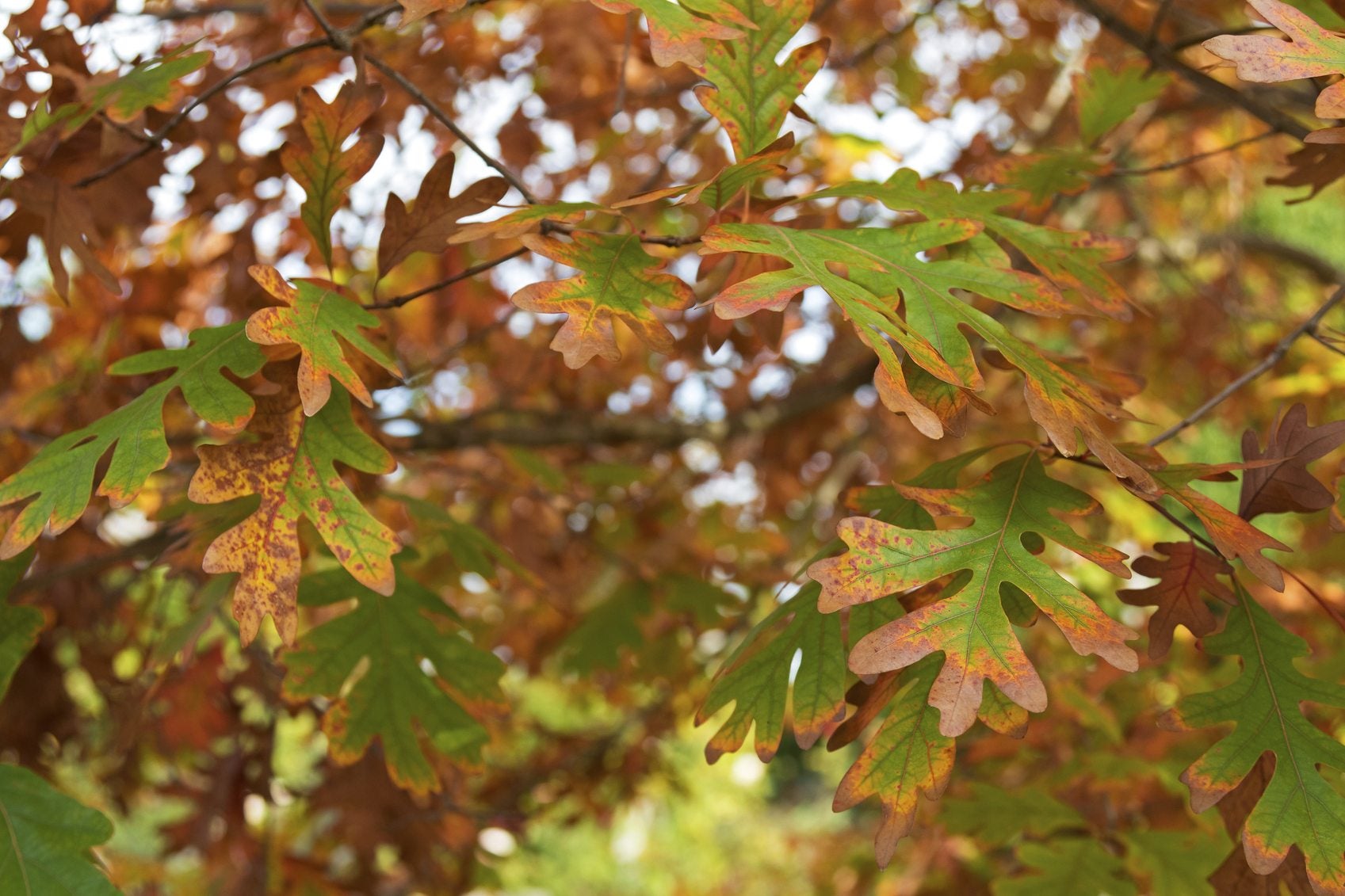White Oak Tree Facts – What Are White Oak Tree Growing Conditions


White oak trees (Quercus alba) are North American natives whose natural habitat extends from southern Canada down to Florida, over to Texas, and up to Minnesota. They are gentle giants that can reach 100 feet (30.5 m.) in height and live for centuries. Their branches provide shade, their acorns feed wildlife, and their fall colors dazzle everyone who sees them. Keep reading to learn some white oak tree facts and how to include white oak trees in the landscape of your home.
White Oak Tree Facts
White oak trees get their name from the whitish color of the undersides of their leaves, distinguishing them from other oaks. They are hardy from USDA zone 3 through 9. They grow at a moderate rate, from 1 to 2 feet (31-61 cm.) per year, reaching between 50 and 100 feet (15-30.5 m.) tall and 50 to 80 feet (15-25 m.) wide at maturity. These oak trees produce both male and female flowers. The male flowers, called catkins, are 4 inch (10 cm.) long, yellow clusters that hang down from the branches. The female flowers are smaller red spikes. Together, the flowers produce large acorns that reach over an inch (2.5 cm.) long. The acorns are a favorite of a wide variety of native North American wildlife. In the fall, the leaves turn striking shades of red to deep burgundy. Especially on young trees, the leaves may stay in place all through the winter.
White Oak Tree Growing Requirements
White oak trees can be started from acorns sown in the fall and heavily mulched. Young seedlings can also be planted in the spring. White oak trees have a deep taproot, however, so transplanting after a certain age can be very difficult. White oak tree growing conditions are relatively forgiving. The trees like to have at least four hours of direct sunlight per day, though in the wild young trees will grow for years in the forest understory. White oaks like deep, moist, rich, slightly acidic soil. Due to their deep root system, they can tolerate drought reasonably well once they are established. They do not, however, do well in poor, shallow, or compacted soil. Plant the oak tree somewhere where the soil is deep and rich, and the sunlight is unfiltered for the best results.
Sign up for the Gardening Know How newsletter today and receive a free copy of our e-book "How to Grow Delicious Tomatoes".

The only child of a horticulturist and an English teacher, Liz Baessler was destined to become a gardening editor. She has been with Gardening Know how since 2015, and a Senior Editor since 2020. She holds a BA in English from Brandeis University and an MA in English from the University of Geneva, Switzerland. After years of gardening in containers and community garden plots, she finally has a backyard of her own, which she is systematically filling with vegetables and flowers.